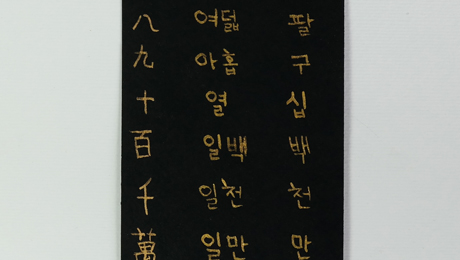 Learning a language, especially perhaps a language like Korean, can be disheartening at times.
Learning a language, especially perhaps a language like Korean, can be disheartening at times.
→ How to learn Korean language
For a while you feel like you are making progress. You put in a lot of effort, your vocabulary is slowly increasing, you finally grasp that one grammar rule that puzzled you for months and then… you get the wind knocked out of you when you realize you can’t understand a thing.
That would be an example of a bad day for a language learner. There are certainly good days too. On those days you see the progress you’ve made. You surprise yourself by knowing something you didn’t yet even attempt to learn. You feel encouraged and motivated.
Good days are, well, good. But in order to stick around long enough to actually learn the language you need to power through the bad ones.
There is a lot of useful advice when it comes to language learning. But when taking on a language, or anything that requires years of hard work to master, there is actually only one thing you must do: not give up.
And how do you persist?
Make it fun.
You certainly do need to learn in a serious and structured way as well – grammar needs to be understood, vocabulary memorized, pronunciation practiced… but even the most tedious work can be made fun.
→ Best Korean pronunciation books
And how do you make it fun? Well, that is something you need to figure out for yourself. This is how I make it fun for myself:
Take for example learning Hanja, the Chinese characters used in Korean (luckily less and less). You may think learning thousands of strokes couldn’t possibly be fun. Think again.
I like anything and everything that has to do with writing. I like pens and papers and brushes and inks and notebooks and… you get the picture. Naturally, I like calligraphy (as you might have guessed from my extensive post about Korean calligraphy). So, after four days of memorizing Hanja, its meaning and pronunciation, I grabbed a brand new dip pen, a golden watercolor, a black strip of paper, and set to work. I mean, set to fun.
I made sure I don’t peek into the textbook I studied from (Useful Chinese Characters for Learners of Korean) and wrote everything down from memory. When you think about it, I didn’t just get to practice Chinese characters that way. I had a first experience writing with a dip pen. I learned putting too much watercolor on the nib will results in nasty splotches. I practiced my Hangul handwriting (which still leaves a lot to be desired). And I’ve done all that without absolutely any notions that this was serious and difficult work called studying.
Golden watercolor may not be what will make it fun for you. Think where your enjoyment and drive comes from, and grab onto it. Do you like K-pop? Why not use K-pop lyrics to learn Korean vocabulary? Do you enjoy Korean historical films and dramas? Why not use traditional Korean brush calligraphy to aid memorization? Do you like shopping? Why not challenge yourself to order an item just using Korean description?
I’m sure there are as many passions and fantasies as I have readers and I can’t possibly imagine what excites you and makes you enjoy yourself. I’m not going to tell you what to do, I will just tell you what not to do: don’t think that learning has to be separate from having fun.
↵ Why fun matters in education
As for me? I will also make sure to keep having fun when learning Korean. Looking at the black strip closely I see many imperfections. Still, looking at it as a whole it looks darn cool. And shimmery. Next time it will certainly be better. And what is that, if not learning?
Readers who liked this also liked: Korean notebooks for writing Chinese characters
→ Next make a plan for learning Korean language


Comment (you DON’T need to fill in e-mail address)